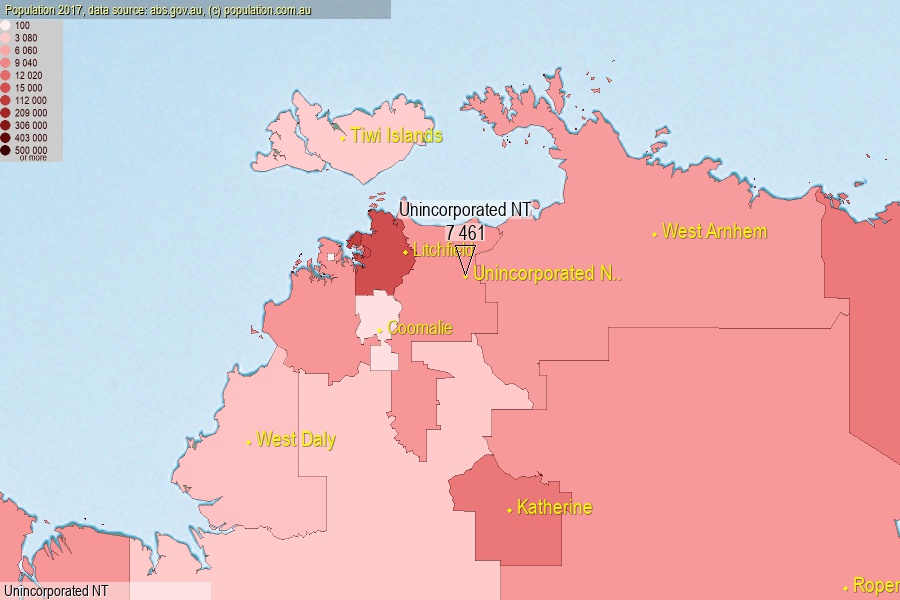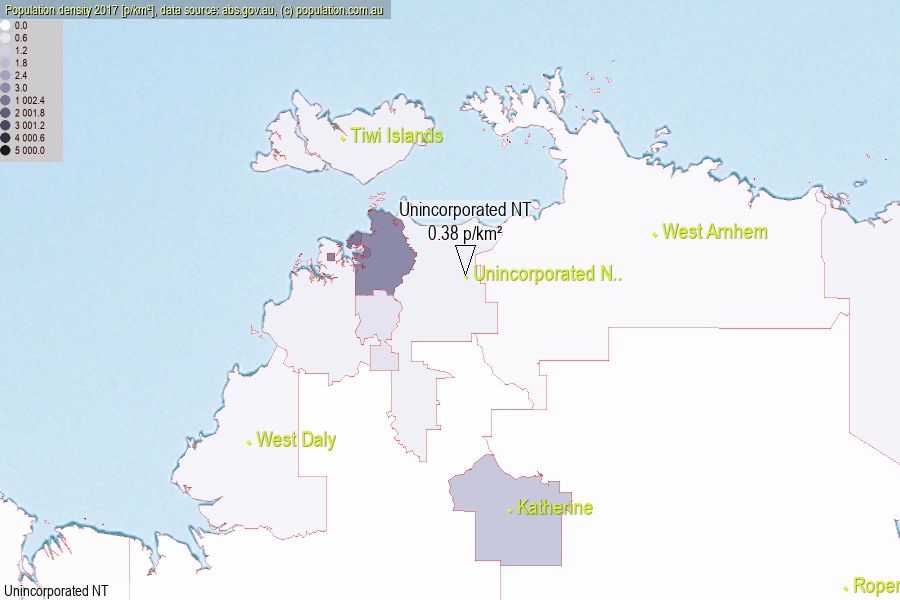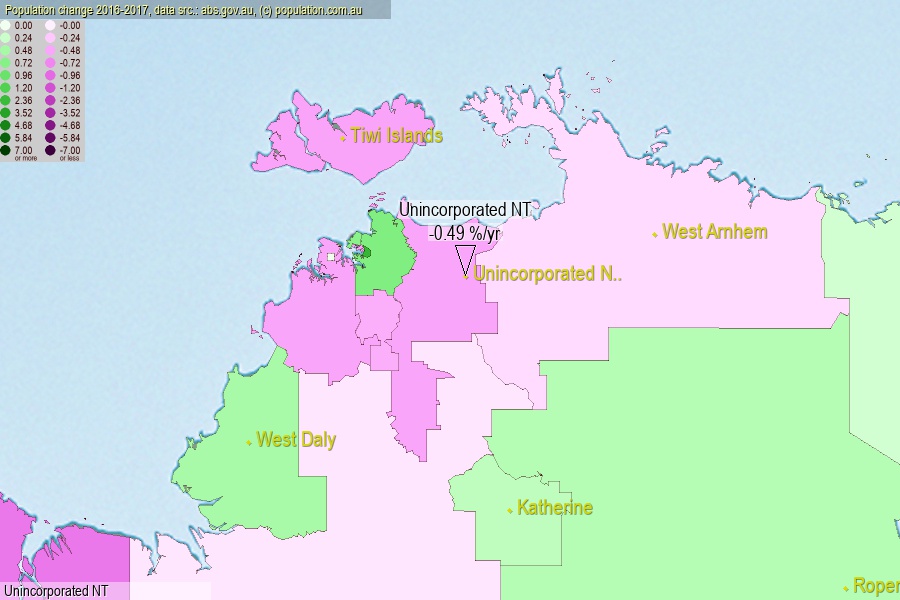 population.com.au
population.com.auLast official estimated population of Unincorporated NT Unincorporated Areas (as Local Government Area) was 7 461 people (on 2017-06-30)[2]. This was 0.03% of total Australian population and 3.024% of NT population. Area of Unincorporated NT is 19 790.00 km², in this year population density was 0.38 p/km² . If population growth rate would be same as in period 2016-2017 (-0.49%/yr), Unincorporated NT population in 2025 would be 7 171. [0]



Click to enlarge. Unincorporated NT is located in the center of the images.
Population [people], population density [p./km²] and population change [%/year] [2]
[1996-2001] -23.51 %/Y
[2001-2002] +0.74 %/Y
[2002-2003] -0.11 %/Y
[2003-2004] +1.00 %/Y
[2004-2005] +4.22 %/Y
[2005-2006] +2.79 %/Y
[2006-2007] +3.56 %/Y
[2007-2008] +1.92 %/Y
[2008-2009] +2.68 %/Y
[2009-2010] +2.86 %/Y
[2010-2011] -0.04 %/Y
[2011-2012] -0.35 %/Y
[2012-2013] -0.23 %/Y
[2013-2014] -2.75 %/Y
[2014-2015] -12.58 %/Y
[2015-2016] -2.20 %/Y
[2016-2017] -0.49 %/Y
[0] Calculated with linear interpolation from officially estimated population
[1] Read more about LGA and Australian Statistical Geography Standard (ASGS) on abs.gov.au
[2] Population data from Australian Bureau of Statistics (Population and density: 2017; change: 2016-2017)
[3] Digital Boundaries: Australian Statistical Geography Standard (ASGS) 2016.